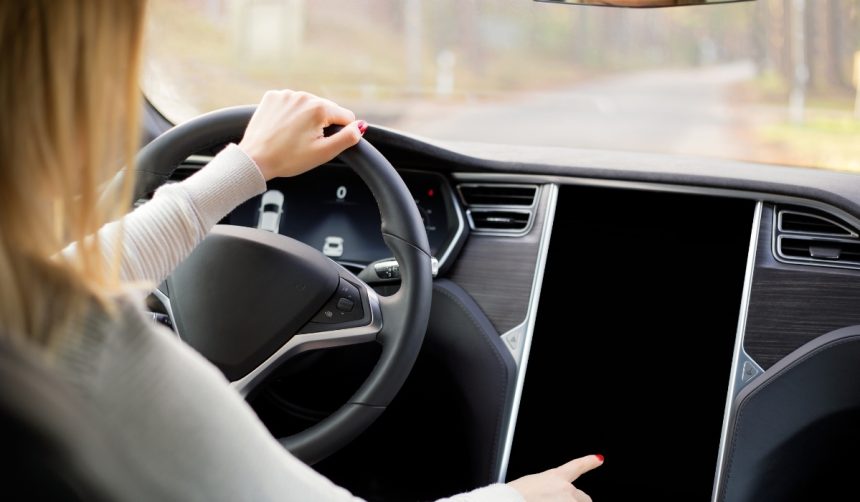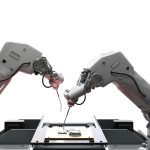Tesla’s highly anticipated Cybercab has been observed in public, showing updated features that indicate the project is close to entering the production phase. As the vehicle moved through California streets, it caught the attention of both Tesla fans and industry observers. The automated two-seater, aimed at the autonomous taxi market, continues to spark curiosity and debate about Tesla’s direction with self-driving technology and urban transport solutions. The presence of a steering wheel in the prototype, along with subtle design refinements, highlights Tesla’s ongoing work to satisfy both regulatory requirements and functional needs.
Earlier images of the Cybercab displayed prototypes that looked distinctly different, often lacking several finalized features visible in this latest version. When compared to previous public sightings, the newer prototype includes practical modifications such as repositioned cameras and visible changes to exterior styling. Speculation about regulatory approval timelines and the actual implementation of full autonomy persists, though current developments signal steady progress. Industry observers have debated how Tesla’s iterative approach might affect competition in the autonomous vehicle sector, especially with rival companies simultaneously pushing their own robotaxi fleets.
What are the latest visible design changes?
One of the most apparent adjustments includes a redesigned tail that rises more than before, which may contribute to better aerodynamic performance. Changes also extend to a shortened rear body panel and newly positioned red reflectors, both of which alter the visual profile of the Cybercab. The placement of the side repeater cameras appears adjusted to enhance visibility, while rear bumper design tweaks and unpainted surfaces contribute to a newer aesthetic. Several observers have remarked that these tweaks suggest Tesla is refining details, moving away from the angular look of earlier Cybertruck-inspired iterations.
How has the user experience been addressed?
Tesla also seems to have focused on making entry and exit more straightforward by shifting the B-pillar slightly forward and lowering it, creating space for larger door panels. The absence of paint on the tires and a lack of extended wheel covers give the prototype a more simplified look. Additionally, the prototype now includes side mirrors, though these are believed to be a temporary feature for regulatory evaluation, reflecting the balance manufacturers must strike between design vision and safety compliance. A member of Tesla’s engineering team commented,
“We’re constantly testing real-world changes to ensure every element serves a purpose for autonomous operation while remaining compliant with required standards.”
Are public teasers revealing further progress?
Recent images shared by Tesla’s AI team featured the Cybercab at an In-N-Out drive-through, highlighting the company’s custom of using such locations for informal vehicle testing. Sharp-eyed followers noted updates to the front end, such as segmented daytime running lights, a more pronounced splitter, and functioning turn signals. These upgrades have led some to describe the Cybercab’s recent look as more practical, if visually less futuristic than earlier models. Reflecting on the progress, a Tesla spokesperson stated,
“Each public appearance allows us to learn not just about the prototype, but also public interaction and acceptance of this vehicle class.”
Since initial prototypes were introduced in early 2024, enthusiasm and skepticism have run parallel, with early designs sparking discussions over safety, comfort, and regulatory approval. Observers monitoring prototype sightings have noted incremental developments, such as new hardware placements and subtle bodywork revisions. The timeline for full commercialization remains unclear, as it does with many autonomous vehicle projects across the industry. Nevertheless, each new public test builds expectations and offers insights into Tesla’s iterative approach to readying the Cybercab for market entry. Other companies have similarly chosen incremental public testing, but Tesla’s approach draws significant attention due to the brand’s market influence. Comparison with rival initiatives shows varying priorities: while Tesla focuses on progressive design changes and street testing, others may prioritize simulation or limited-area deployment.
For those monitoring advances in autonomous vehicles, the latest Cybercab sighting highlights how Tesla adapts designs in response to both testing results and regulatory frameworks. As full autonomy remains a technical and legal goal rather than a guaranteed reality, these continued updates underline the complexities of merging new design concepts with mass-market viability. Consumers considering autonomous vehicle options should closely watch how companies address ongoing safety, usability, and legislative hurdles. With subtle shifts and ongoing public visibility, Tesla’s strategy demonstrates the importance of real-world feedback and adaptation when attempting to introduce new self-driving solutions into public spaces. These public tests and design changes suggest the company is steadily working to refine safety, user comfort, and operational readiness before any major rollout.
- Cybercab prototype debuts revised design and improved aerodynamics.
- Regulatory requirements influence the prototype’s visible features.
- Ongoing tests indicate Tesla’s incremental approach to market readiness.










